ETFs or Electronically Traded Funds are an amalgam of stocks grouped together to track an investment ideology or index fund. Simply put an ETF is just a grouping of stocks that track a central investment or investments.
These ETF’s need to be rebalanced to reflect changes in the stock market. Every ETF is comprised of several stocks that are lumped together. When you buy an ETF you are buying a small portion of a bunch of stocks/assets.
Therefore when one of these stocks that make up your ETF change in value the ETF needs to either buy or sell other stocks to ‘rebalance’ their portfolio, which is the ETF.
Understanding how and when your ETF rebalances itself can net you large rewards if timed properly. Below I provide some of the most common rebalancing timeframes that ETF’s use along with how to profit from an ETF rebalancing.
Let’s jump right in.

Most Common ETF’s Rebalancing Times.
Most ETF’s are generally rebalanced quarterly. Every 2.5-3 months the ETF will look at all of its holdings and adjust the percentage within their portfolio to mimic their index.
ETF’s are either actively managed or passively managed. Actively managed ETF’s are rebalanced daily as positions are bought and sold while passively managed ETFs are rebalanced on a set dates throughout the year.
Passively Managed Funds
A good example of a passively managed ETF is the SPY. The Spy is the largest ETF that tracks the S&P 500. Since the SPY is a passively managed fund this means that every 3 months the SPY will look at all of its holdings and adjust their percentage to mimic the index fund the SPY tracks, which is the S&P 500.

This S&P 500 tracks the top 500 companies on the U.S market by market-cap. Companies such as Apple, Google, Microsoft, and Tesla are in this category. If Tesla goes from a 3% market cap to a 2.1% market cap then the SPY will drop their holdings from 3% TSLA to 2.1% TSLA in accordance at the end of the quarter.
Actively Managed Fund
An activly managed fund is managed by a human instead of a robot. These funds often return exotic returns that are either way below or way above market return. Therefor their is more risk but also more return as you are investing in human experience.
Currently one of the most well known of these actively managed ETF’s is the Ark Innovation ETF (ARKK).
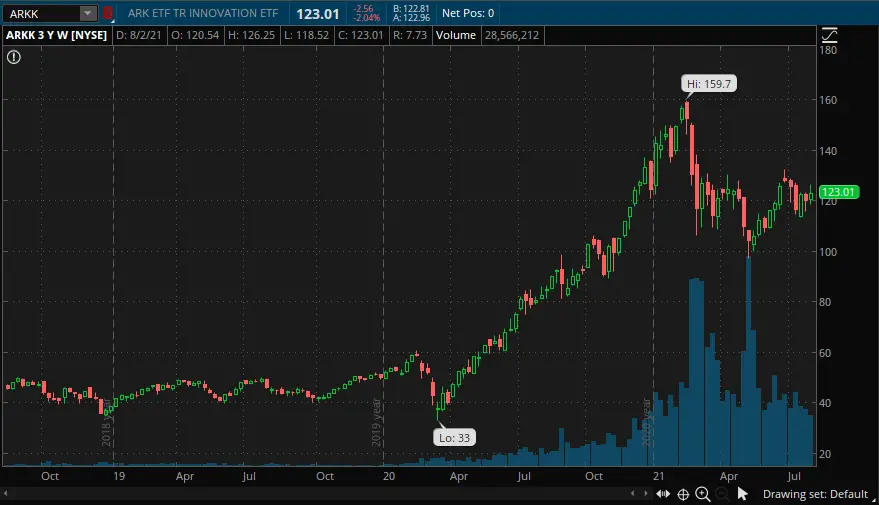
The ARKK fund does not track an established index like the S&P 500. Instead ARKK tracks their own select portfolio of U.S stocks that specialize on innovating upon established and stagnant markets/sectors.
Simply explained ARKK finds U.S stocks that have new technology that has a good chance of destabilizing large companies. During the 2020 pandemic this method of investing worked and ARKK returned a massive 350%.
Since ARKK is actively managed positions are bought and sold daily. This means that every day ARKK is rebalanced to fit their own portfolio.
Inversed Leveraged ETF’s
We need to talk about the red headed step child of ETF’s…the Inversed Leveraged ETF.
These ETF’s seek to short an index. Shorting is a complex method of investing where you bet that the stock will go down. Thus you make money when the price of a stock decreases. For a full rundown on shorting check out this post.
Shorting a Stock Explained: Making Money When the Stock Goes Down.
These inverse leveraged ETF’s short large indexes. As such when there is a recession or economic collapse these ETF’s will rise in price.
The only problem is that these ETF’s are rebalanced daily while they are also short. This means that over time your position is worth less and less. As such holding these ETF’s for any extended period of time is a bad idea.
Its much better to invest in these ETF’s when the market starts to collapse.
How to Make Money off an ETF Rebalancing.
There are two ways to make money off ETF’s rebalancing; pursuing actively managed investments, and investing before passively managed additions.
Pursuing Actively Managed Investments
Actively managed funds such as ARKK have to publish their holdings. As such you can figure out what the ETF manager’s idea of a good investment is.
The ARKK fund for example invests in innovation on the U.S market. They heavily look at U.S growth rates within a sector as an indication of a good investment. As such if you find a stock that has positioned itself to profit off U.S consumer growth you can invest before ARKK gets in.
A good example of a stock that got invested in by ARKK is Coinbase (COIN). For a full rundown on why COIN got added and its growth potential see the following post.
Coinbase (COIN) stock analysis: Why you need to buy Coinbase Global.
In July of 2021 ARKK announced that they invested heavily in Coinbase. This resulted in a gradual increase in their stock price driven by retail investor interest.
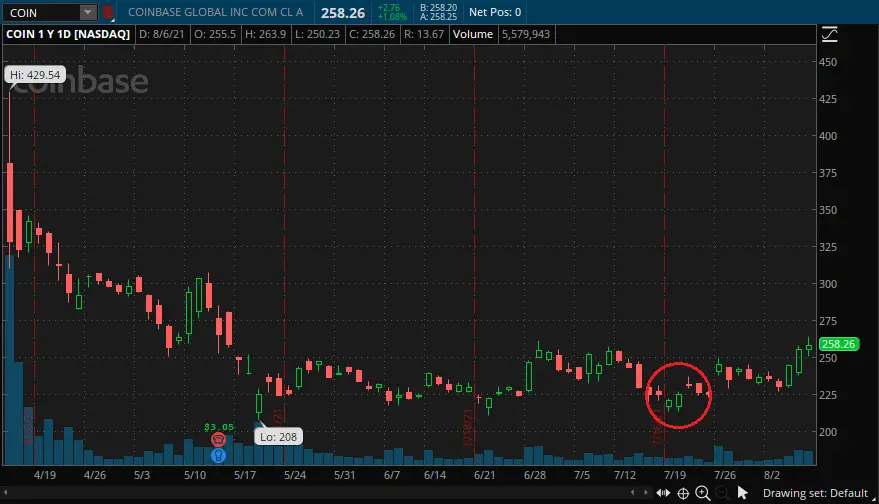
Since you know how ARKK invests in stocks you can position an investment to profit. Simply find a U.S publicly traded company that innovates upon a stagnant or growing sector with large EBITDA and take a position and wait for ARKK to invest.
This is the secret to making a nice 10-20% return off investor hype driven by actively managed fund investing. It does not always work on the first try but the more you practice this investing methodology the better you will get at it.

The secret is finding the actively managed funds investment methodology and getting in before they do.
Investing Before Passively Managed Additions
Since passively managed ETF’s announce their rebalancing date you can invest in this shift.
For example if a company is announced that it is going to join the S&P 500 then you can bet that people will start to invest off this hype. If you get in soon enough you can flip the investment for a quick profit.
A good example of this happening is TSLA when in the period of announcement of the stock joining the S&P 500 and its addition.

The red circle in the above chart is when TSLA was added to the S&P 500. As we can see investor hype in the subsequent months was pushed the stock up another 50% in price.
TSLA being added to the S&P 500 was nothing new. It was announced several months earlier so you had plenty of time to invest in the company before it exploded. In fact many news agencies were predicting volatility increasing on TSLA. (Source)

The secret to this investment methodology is figuring out what major index funds are going to be adding what stocks to their index. The next step is to find out what passively managed ETF’s are following the index. You simply invest before the stock is added to the ETF, and sell into the hype generated by the index addition of your stock.
Conclusion
ETF’s are generally rebalanced every quarter. They follow an index and when they are rebalanced you can make some reliable money. Actively managed funds are traded and thus rebalanced daily. You shouldn’t hold inverse leveraged ETF’s longer then one day.
Learning how to invest off ETF rebalances is a great way to return a couple more percentage points on your portfolio every year. It takes time to do properly but can prove to be a conservative method to return some capital.
As always if you like content like this then you should share with your friends and subscribe to the newsletter! Every share helps me help others, so its much appreciated.
Further, check out some of the latest posts if you got the time!
-
How Long Does a Short Squeeze Last? (3 Answers)
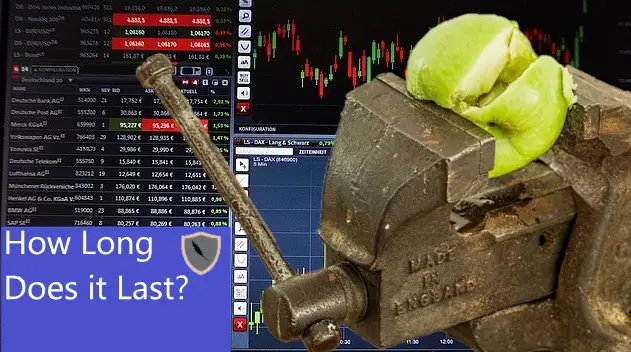
What is the time frame for you short squeeze? Well here is everything you will ever need to know to determine how long it will last.
-
Why You Still Own a Stock After It’s Delisted and How to Sell It
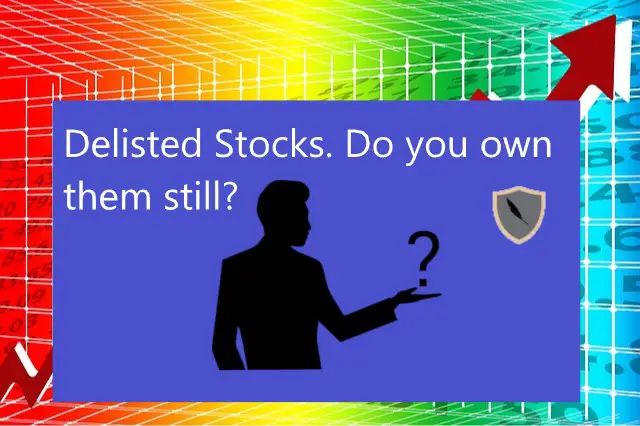
Do you still own a stock after its delisted? How do you sell it? Don’t worry the stock is still worth money and here is how to sell.
-
Can You Make 1% A Day in the Stock Market? (3 Steps)
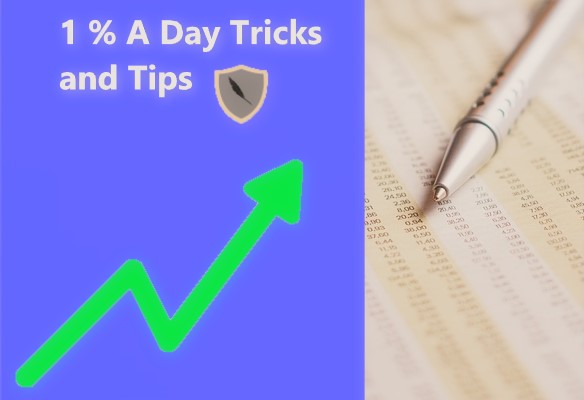
Making 1% a day in the stock market is hard but defiantly doable. Here are 3 simple steps to helping you achieve this return.
Until next time, I wish you the best of luck in your investments!
Sincerely,

